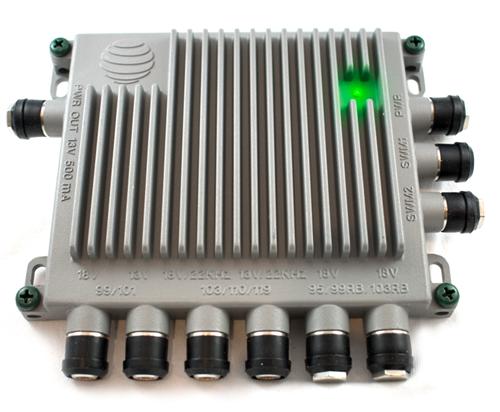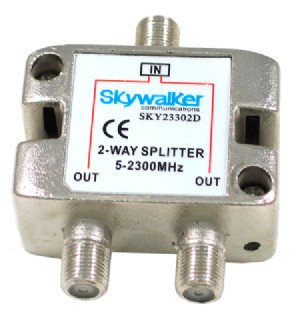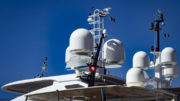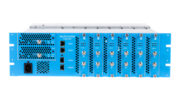So, you’ve decided to expand. You’re moving from one multiswitch to two. You’ve read our White Paper on the subject. You understand the different kinds of splitters. You’re ready to go. Just one more thing… it’s time to take a close look at one splitter in particular and how it’s used in your DIRECTV system.
That specialized splitter is the Skywalker 23302D. It’s used between your dish and multiswitches, and it feeds the signal into both. There’s some confusion as to how to use this splitter, so let’s dive in.
Power Passing? Do I need Power Passing?
One feature of the Skywalker splitters is that they pass power on both legs. In other words, if there is DC voltage it will pass from either leg of the splitter (or both) up to the dish.
With older installations, power-passing splitters were essential. Because these devices were not powered by themselves, they rely on the meager power provided by the receivers to power the dish. Without this, the multiswitch simply won’t function.
If you are using a single-wire multiswitch, things get a little more complex. A power-passing port is used on a green-label splitter to provide 29 volts to the multiswitch. The multiswitch then provides power to the dish. So, at least one port on splitter that sits between the SWM and switch must pass power. But both?
Larger installations
Larger installations with multiple SWMs need power-passing splitters. While you can combine four multiswitches with a SWM expander, installations requiring more than 108 tuners will require multiple SWM expanders. You use power-passing splitters to feed each SWM expander equally.
DIRECTV standard is to use power-passing splitters for three reasons. First of all, it is possible the 22 kHz tones carried on some signals could be out of phase and cancel each other out. This may not happen right away but there is some risk of it happening, which would unbalance the entire system and cause it to stop functioning. Another reason to use a 2-port power-passing splitter is that if one SWM should fail, it wouldn’t bring down the entire system. Finally, the 2-port power-passing splitters are no more expensive so there is no reason not to use one.
Attaching the splitters

The most important thing to note when you attach the splitters is that both legs of each splitter must feed the same port on both multiswitches. In other words if you feed the leftmost port (the one labeled 18V 99/101 above) on one multiswitch you must feed the same port on the other multiswitch from the same splitter. If you don’t do this, you’ll find that tuners will go in and out and your system won’t work well at all.
Why?
There is a simple reason for this. A DIRECTV dish is designed to put out six types of signals. The signals can be at two different voltages, and they will, or will not, have a 22kHz “tone” attached to them. This allows the multiswitch to identify the signal’s origin (which satellite) and helps route the signal to the receiver so that the receiver can decode it.
Each cable can only carry of the six signal types at once. Imagine one of your multiswitches is asking for 18V with no tone. The other is asking for 13V with tone. In that case the dish will send only one type of signal. The other multiswitch will report “no signal.” So, in order to properly route the signal, both multiswitches must always be asking for the same type of signal. This is true no matter what sort of multiswitch you’re using, and it’s also the reason you can’t use splitters on older systems: if you split the signal, each receiver could ask for a different signal type. Using a single wire multiswitch changes the way the signals travel over the wire. This allows signals from all six input wire to travel on a single wire.
The Skywalker splitters are a “set it and forget it” item. They hardly ever break or cause any trouble, so long as they are connected to the dish properly.
Get what you need at Solid Signal
If you need parts for a commercial installation, or anything related to satellite technology, you’ll find the best selection by shopping at Solid Signal.





